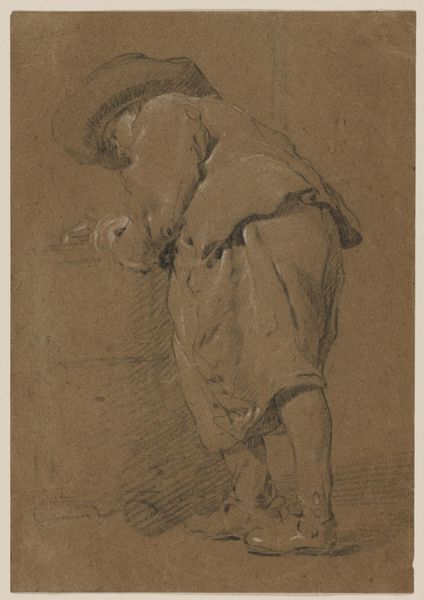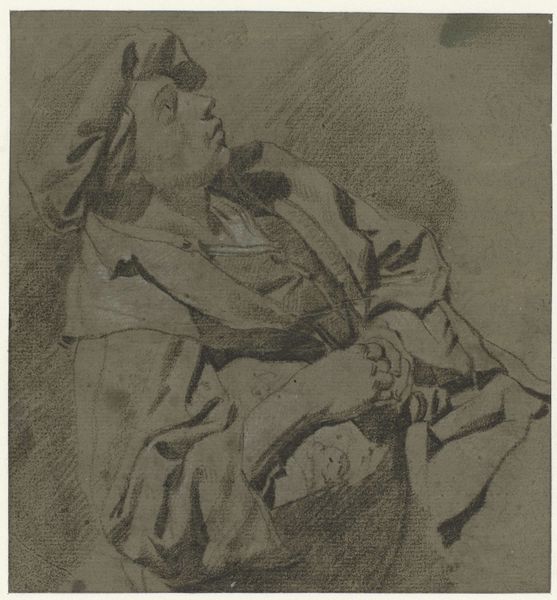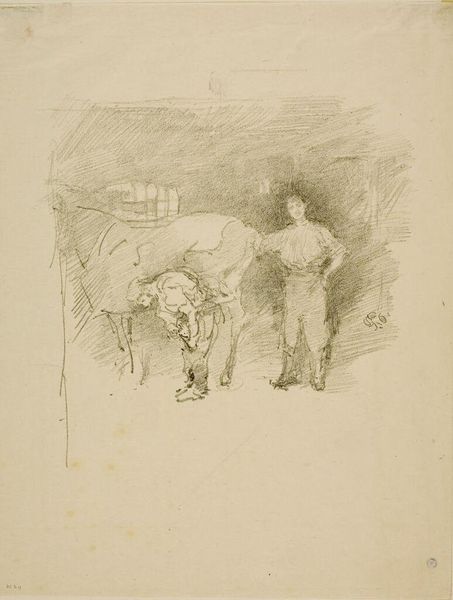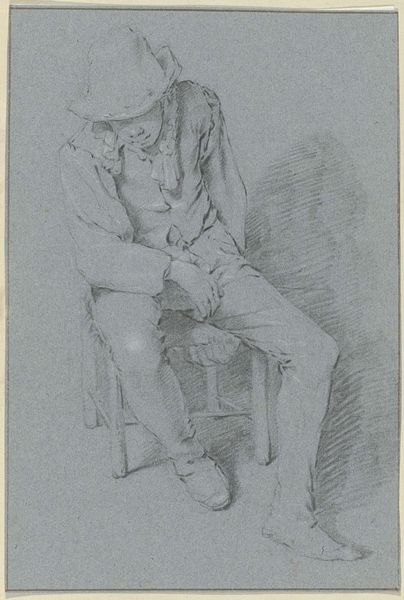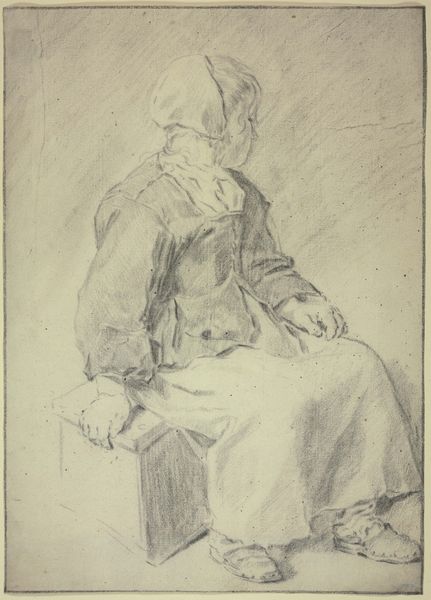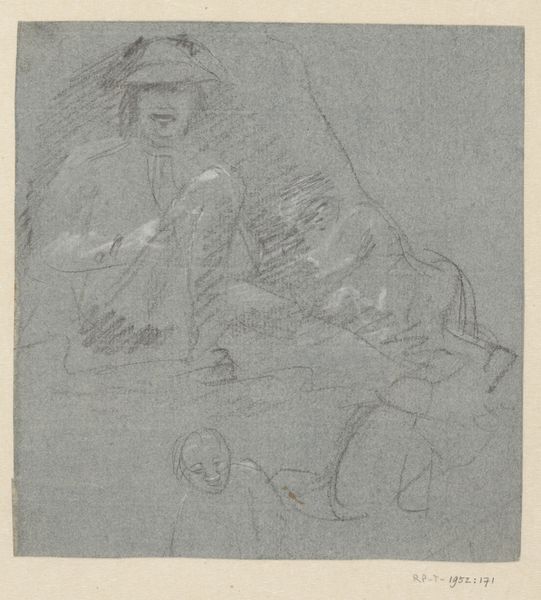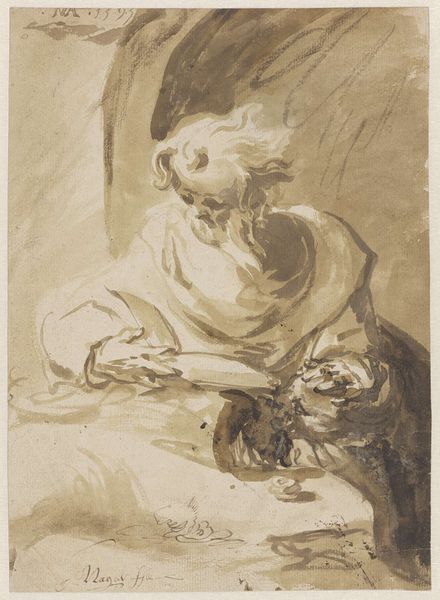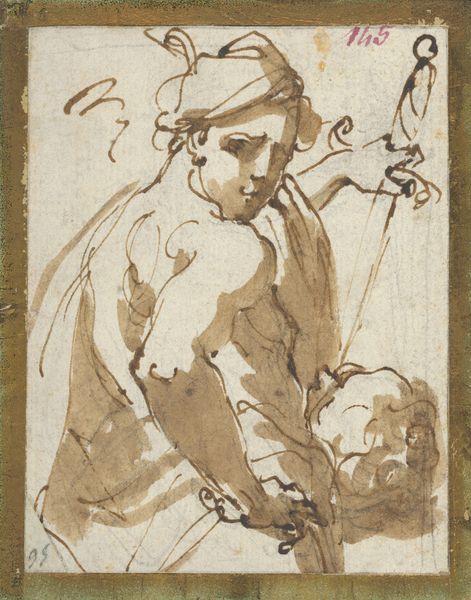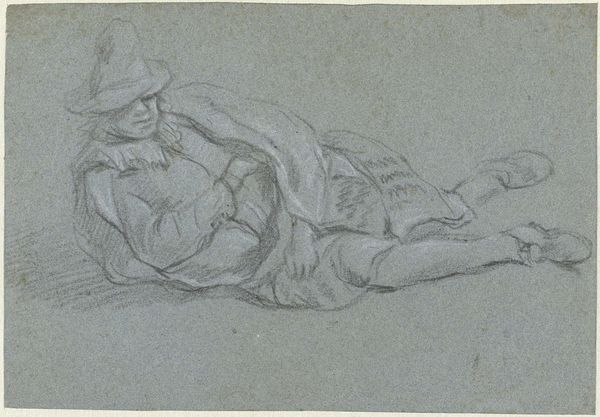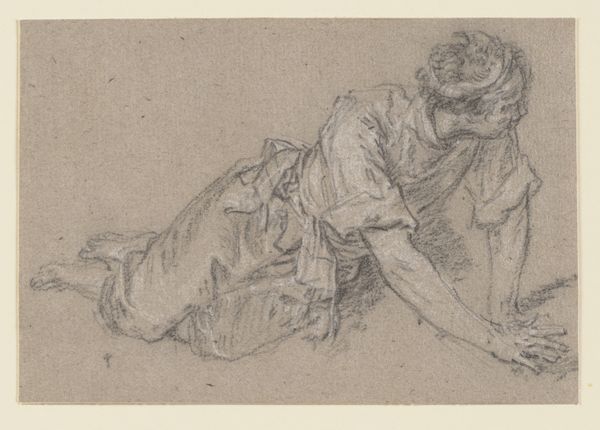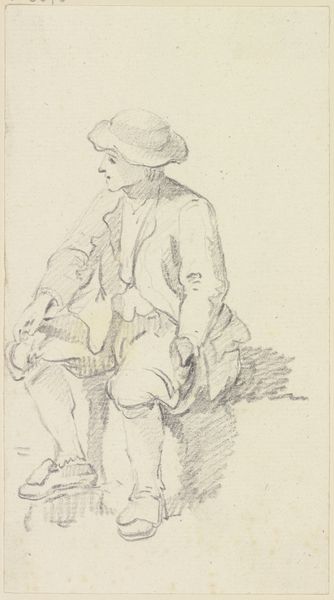
drawing, paper, chalk
#
portrait
#
drawing
#
animal
#
landscape
#
figuration
#
paper
#
chalk
Dimensions: 388 × 262 mm
Copyright: Public Domain
Curator: This drawing, titled "Seated Man with Dog," is attributed to Pierre-Jacques Volaire. It's undated but held here at The Art Institute of Chicago. The medium is chalk on paper. It immediately strikes me by how seemingly simple, it achieves so much emotion. Editor: It certainly conveys a subdued atmosphere. The color of the paper seems to dictate that, that slightly cold blue. It almost makes the dog and man seem like shadows. Tell me about the materiality. Is there anything significant there? Curator: Chalk, of course, is an interesting medium. It suggests a degree of planning but also permits spontaneity. Here, Volaire coaxes it to achieve quite diverse effects – a real contrast in textures. Note the relative looseness of the hat versus the clear linearity of the dog’s posture, that lean elegant muscle tone. One could argue the relative values become social too, almost literally "drawing" out social hierarchy. Editor: A keen observation about the textures serving a dual purpose, both aesthetically and socio-politically. I wonder how class dynamics might further inform our understanding here? Dogs, after all, especially greyhounds such as this one, have long had an established role as symbols of aristocracy. Is the sitter himself gentry, or a groundskeeper perhaps? We could begin there. The relatively plain clothing hints the latter, and if this drawing functions as portraiture then it subtly complicates those categories in a time of huge social unrest. Curator: The sitter's posture certainly reinforces the idea of leisure over labour. Although the handling of chalk means that a portrait becomes very readily reproducible and, for want of a better word, commodifiable. And who consumes the artwork, of course, speaks to a whole separate conversation! Do we have information as to provenance? Editor: Unfortunately, our research turns up no definitive historical insights here. The power dynamics in relationships between men and animals were already undergoing significant renegotiation by the late eighteenth century, too, with Romanticism soon in full swing, perhaps the piece functions as a commentary, albeit oblique. Curator: Perhaps Volaire wanted us to see only an isolated instant. Its incompleteness, despite the strong formal devices employed, allows for continued reading, doesn't it? It’s an excellent example of how, even in an artist’s casual study, complex processes and ideas come to be. Editor: I appreciate that, the unresolved social aspects mirror the aesthetic choices: so many directions still visible within a seemingly simple tableau.
Comments
No comments
Be the first to comment and join the conversation on the ultimate creative platform.
